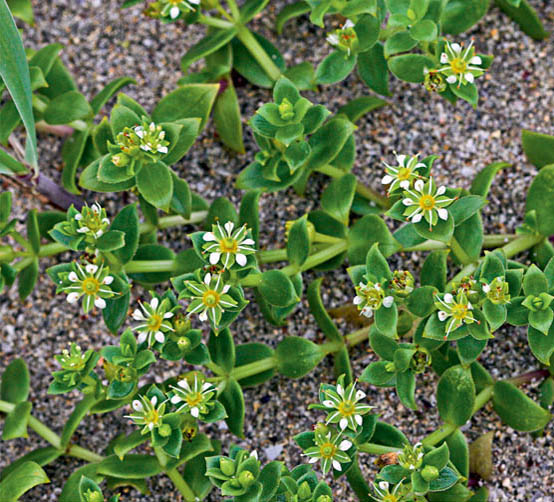Salzmiere

> dickfleischige Stängel und Blätter
> am Strand
> verträgt Salz und Übersandung
Merkmale Stängel liegend mit aufrechten Seitenästen und dicht sitzenden, oval-spitzen Blättern, meist gelbgrün, ziemlich fest, dickfleischig, bis zu 30 cm hoch. Unscheinbare Blüten mit fünf weißen Kronblättern. Vorkommen Spülsäume und strandnahe Dünen, auf feuchtem Sand, an Nord- und Ostseeküste. Wissenswertes Die Salzmiere verträgt salzreichen Boden und kann daher dicht am Meer wachsen. Das in dem dickfleischigen Gewebe gespeicherte Salz kann man deutlich schmecken. Die niedrig wachsende Pflanze ist so widerstandsfähig, dass sie das Leben in der bewegten Strandzone erträgt. Auch wenn sie durch den Wind übersandet wird, macht das der Salzmiere nichts aus: Sie bildet ein umfangreiches Wurzelsystem aus und sendet neue Stängel nach oben, wenn sie unter dem Sand begraben wird. Daher ist sie am Strand häufig und ein konkurrenzstarker Spezialist. Die Bestäubung erfolgt durch Flugsand, der die Pollen von Blüte zu Blüte trägt.